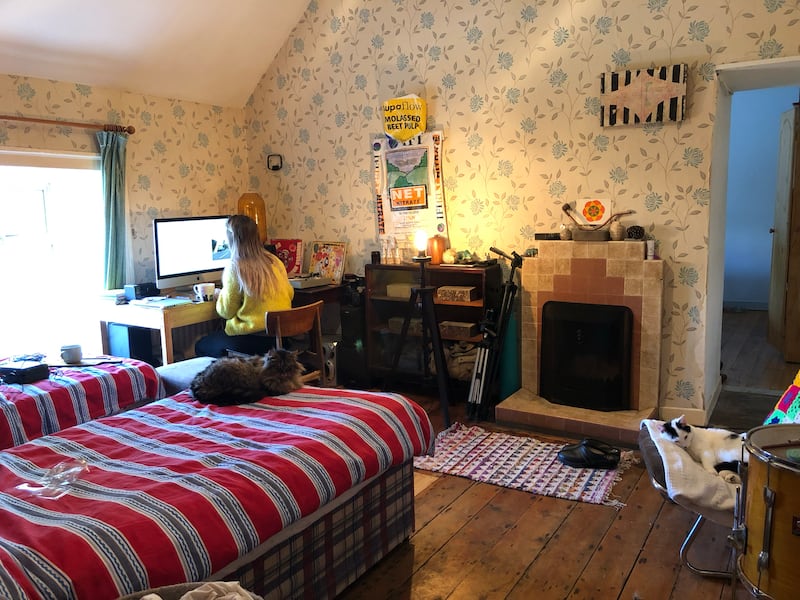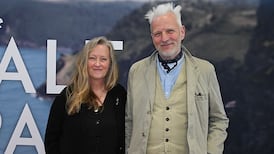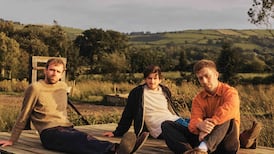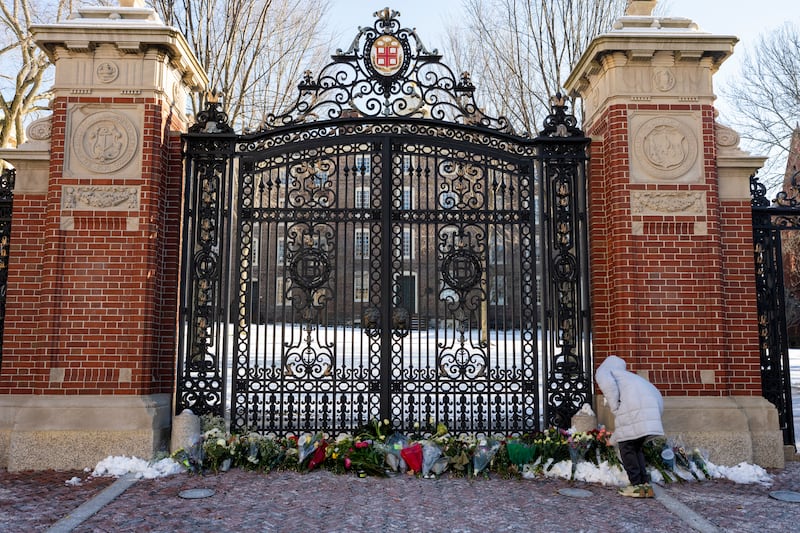At a crossroads in north Co Kilkenny, an inconspicuous farmhouse and its surrounding buildings are a work in progress. This is Brown Mountain Diamond, an experimental artist-owned and artist-run space that hopes to offer a model for how small and quietly radical arts spaces can operate in rural Ireland. The centre consists of a three-bedroom house, a barn and several outbuildings that the visual artist Carl Giffney, its founder and owner, and Eimear Malone, who joined to help develop the facility, are hoping to refurbish as studios.
When I visit, the artist Vera Ryklova, who works across photography, video, performance and installation, is resident. Later in the day, the centre will host an electronic-music event with Kilkenny DJs and producers. Other resident artists this year include Aifric Prior Beliere and Sarah O’Brien. Sara Damaris Muthi is the centre’s visual-arts curator.
Giffney says Brown Mountain Diamond is mostly concerned with “visual art – that’s about 65 per cent – and sound, in the broadest understanding of it. That would include music to spoken word to rave to whatever. We find they all have social repercussions. It’s good for getting people in of different sorts and types. We run a jam session inside, in the sitting room. It’s kind of a musical sitting room. We’ve collected loads of musical instruments. That’s very good for bringing neighbours in.”
The sitting room is indeed packed with instruments, including two drum kits, multiple ukuleles and a small organ. This open and communal space and spirit have reaped interesting results. “People you’d think wouldn’t necessarily be interested, come,” Malone says. “Some people come just to listen,” Giffney adds.
Giffney bought the property in 2019, when he found himself in a position “where I could buy something at a very low budget that I might be able to work on”. He had effectively been on the road for years, living, taking up residencies and making art in Finland, Serbia, Estonia, the Netherlands and Scotland. Brown Mountain Diamond, Malone says, is now the opposite of that for him: “People are coming on residencies instead of him going, and [he’s] being a host instead of being hosted.”
There are a lot of farmhouses with a bit of land ... We’re showing that it’s possible
The Celtic Tiger era increased the number of regional arts centres across Ireland. Dublin, meanwhile, is in a rolling arts-infrastructure crisis, especially in terms of artist studios and workspace. What Brown Mountain Diamond offers is an example of something that could emerge anywhere with a decent vision, a lot of creativity and an artist-led, do-it-yourself mindset. One is left with a feeling of vast potential were such endeavours to be supported with funding, allowing for art with a huge social benefit to flourish in unexpected places.
When Giffney graduated from the National College of Art and Design, in 2007, he and a group of fellow artists established the Good Hatchery, an arts space in north Offaly that ran from 2007 to 2016. “It was brilliant,” he says. “It all wrapped up in nine years. I like to say that I think we could have done it in eight,” he deadpans. “Myself and Ruth Lyons ran it for most of its life.”
An early turning point for Giffney was an Erasmus exchange that he and some other NCAD students went on to Slovenia. “Four of us went there, me and three women from sculpture and painting. We lived separately, intentionally, to spread out. Ljubljana is not huge place, probably smaller than Dublin, but what I saw over there was extremely influential on me.”

As well as being inspired by Metelkova, the city’s autonomous social centre, they were on one occasion invited to “go down to this old Soviet bicycle factory, and were told there would be a few hundred people there, that we’d all turn up on the same day, go in and take over the bicycle factory, and turn it into a cultural centre of some type. We were thinking ‘My eye’, really. When you come from Ireland it’s the opposite kind of thinking.”
But hundreds of people did turn up. “They opened up the gates, and in they went. The state turned on the water to the building and provided a 24-hour security guard for the gate, in case anything happened, and in the space of two or three days turned it [into a cultural centre]. The building was seven storeys tall or something. It was a factory. It was bigger than NCAD, which used to be a whiskey distillery. They were just clearing everything out, fixing the windows, painting the walls, wiring everything up, doing all the gardening. Everyone knew what to do.”
At Brown Mountain Diamond, the smattering of small outbuildings are the next project. Whereas others may just see derelict structures, Giffney and Malone see potential – a woodwork studio, for example. They are currently collecting windows to refurbish part of the barn. In the meantime, a third of the barn has already been turned into a small venue with an impressive soundsystem; a concrete milking stall has been transformed into a DJ booth. “The cows seem to like the techno,” Giffney says of the few cattle in surrounding fields.
“Small organisations starting out, they’re vital for culture,” he adds. “That’s where things come from. They have to be supported.”
Over apple cake and tea around the farmhouse kitchen table, with a cat lounging on a cushion above the range, Malone nods in agreement. It might take three or four years to show that their model works, she says, “but then other people can do it. There are a lot of farmhouses with a bit of land. It’s a common thing. If we can be a model for other spaces, then it’s not just about ‘How could we be as big as Visual [in Carlow]?’ That can seem unattainable. Whereas this is possible. We’re showing that it’s possible.”












